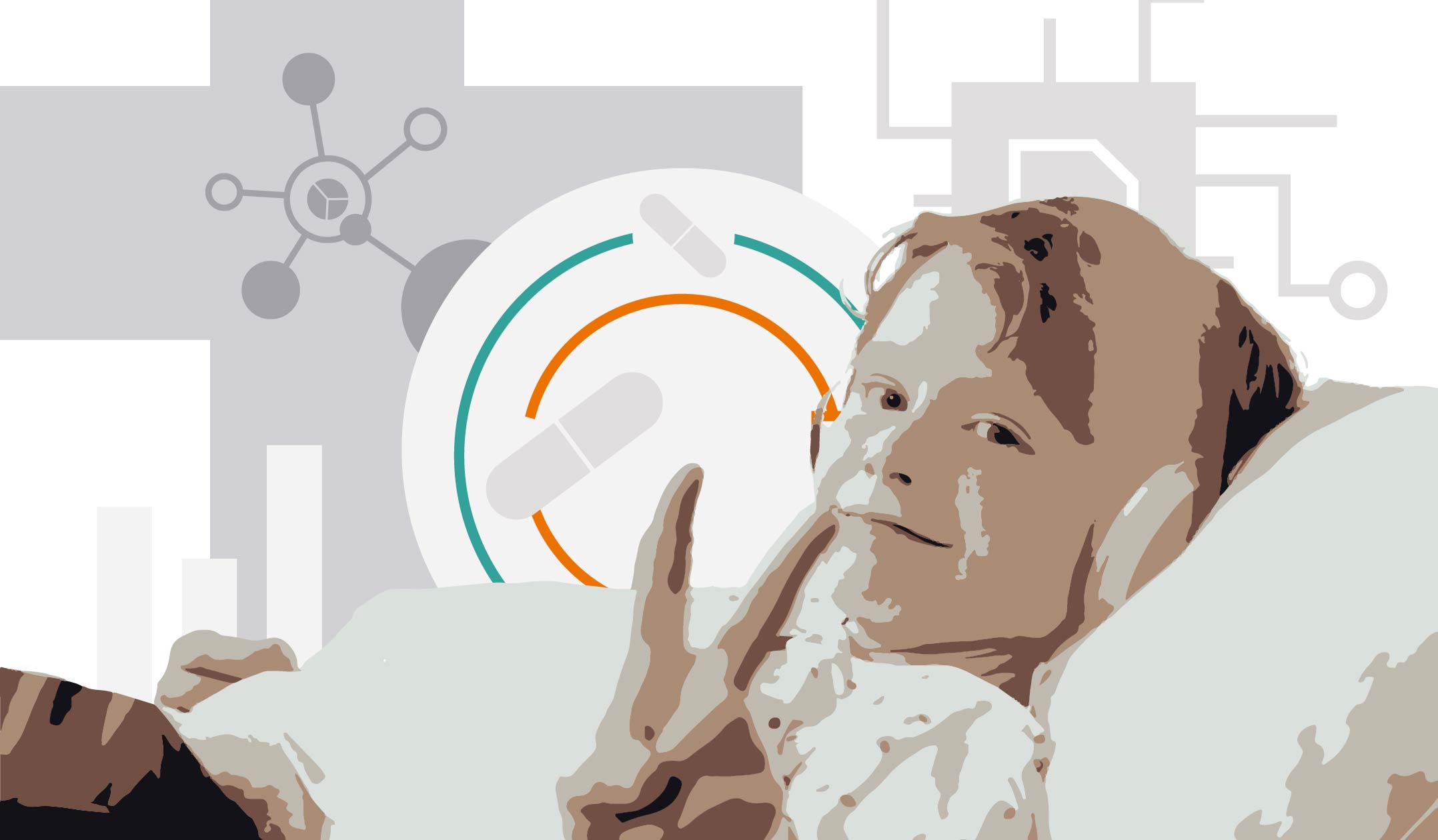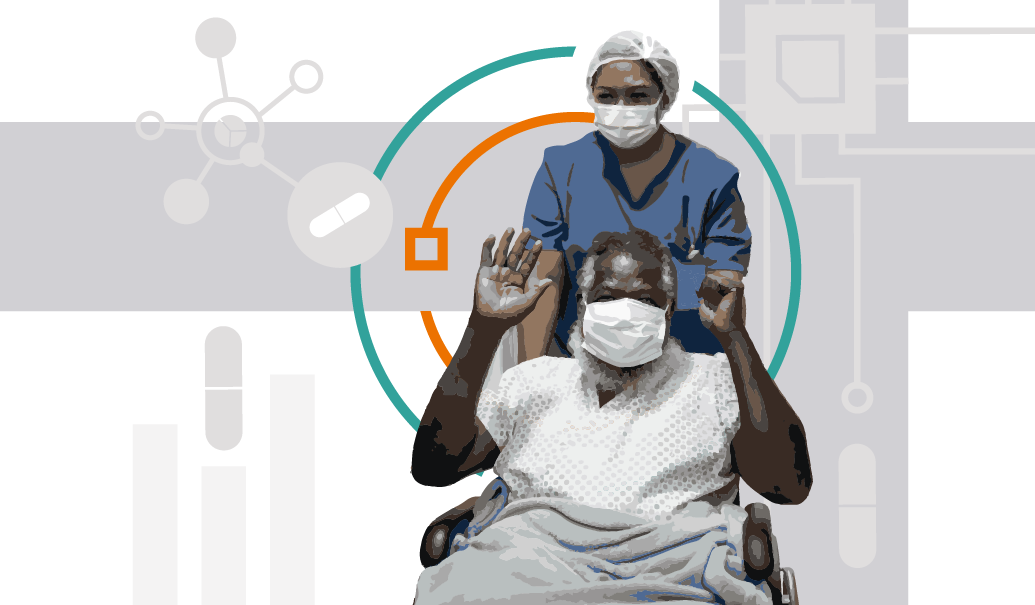The rare disease sector is witnessing a golden age of scientific breakthroughs. With more than 50 novel rare disease drugs and over 10 potentially curative gene therapies on the horizon—many being the first treatment options—there is finally tangible hope for many patients. Yet, despite all the progress the industry and advocates have made in lowering barriers to diagnosis, care and treatment, too many conditions remain under-researched. There are approximately 10,000 distinct rare diseases, affecting nearly 400 million people around the world. The sobering reality is that less than 5% of rare diseases have treatments available today, leaving most patients with limited hope.
Rare disease is finally on the public health radar, thanks to the tireless efforts of patient advocacy groups (PAGs), which has helped open the door for R&D and commercial organization innovation that truly addresses unmet patient needs. In our experience, the most successful life sciences manufacturers in this space are those that work most closely with patients and consider their voice throughout the R&D and commercialization process. These organizations have shifted their cultural mindset from “we bring products to people in need” to “we work with people in need to bring products to them.”
This market presents unique challenges to manufacturers—especially for those new to the space. As life sciences manufacturers intensify their focus on these diseases and enter this market, we think it’s important to highlight some of the unique barriers and call attention to the ways manufacturers should work with PAGs to overcome them.
Closing the diagnosis gap with AI and patient advocacy groups
Patient identification and diagnosis are significant challenges in the rare disease community, which frequently experience diagnosis rates of less than 10 percent. The average time to diagnosis averages five to seven years due to the heterogeneity of clinical phenotypes and limited awareness. However, improved patient access to medical information, advancements in genetic testing and newborn screening programs, as well as industry support for AI-based programs, are all accelerating the diagnosis of rare disease.
Rare disease patients today are more empowered than ever to educate themselves on their own conditions and become experts in them, thanks to the proliferation of direct-to-consumer information channels. While rare disease patients have long used online resources to learn more about their conditions, pharma companies and PAGs have been instrumental in providing patients with vetted, credible medical education. This allows patients to formulate hypotheses about their conditions before they even consult with healthcare professionals (HCPs). Digital platforms like telemedicine and patient portals have become “digital front doors” that enable direct access to specialists, bypassing slower traditional specialist pathways.
Although digital access to greater disease education has empowered these patients, access to those resources hasn’t been distributed equitably and does not adequately support patients from marginalized communities. The challenge of identifying and diagnosing rare diseases is magnified in underserved populations, where barriers such as limited or unreliable internet access, low health literacy and distrust in healthcare systems intersect with traditional obstacles like accessing specialist care for confirmatory diagnoses and treatment. These issues are compounded by inadequate healthcare infrastructure, insufficient insurance coverage and transportation difficulties. For example, although advances in newborn screening and genetic testing are key to diagnosing these predominantly genetic disorders, the effectiveness of these technologies is often constrained by fragmented healthcare systems and disparities in access.
To address this, there’s a pressing need for pharma companies to engage in advocacy efforts to influence policy changes that will improve rare disease diagnosis and treatment. Pharma companies can also develop outreach programs to help bridge the gap between advancing medical technologies and the populations most in need of these products. Finally, there is a significant need for increased investment in the development of diagnostic biomarkers and genetic testing technologies. By focusing on research and development in these areas, pharma companies can enhance the efficiency and accuracy of rare disease diagnoses, leading to earlier and more effective treatment options.
Generative AI and AI-enabled clinical decision support tools have the potential to transform patient identification and diagnosis. When embedded in electronic health records, these technologies can revolutionize the way healthcare professionals approach diagnosis and treatment by synthesizing and analyzing vast amounts of patient data, identifying patterns and suggesting diagnoses that might be overlooked in standard reviews.
To fully capitalize on these trends and build momentum, life sciences must continue to collaborate with PAGs, bolster existing partnerships and support policy changes that bridge the gap between patient needs and the services provided by healthcare systems. For example, organizations like the National Organization for Rare Disorders have collaborated with industry players to support discovery and financing of rare disease therapies, fostering patient-led activism and advocacy for pivotal legislation like the Orphan Drug Act.
Expanding access to rare disease care through centers of excellence
The management of rare genetic diseases presents a formidable challenge for HCPs due to the complexity of the disease and patient heterogeneity. Similarly, new and advanced treatments, such as those using antisense oligonucleotides, cell and gene therapies and gene editing, necessitate highly trained HCPs, specialized treatment sites and advanced account capabilities, all of which limit potential sites of care. Even large institutions with the required capabilities may struggle to care for rare disease patients due to inadequate infrastructure and insufficient interoperability.
Establishing centers of excellence (COEs), which could serve as hubs that provide resources and comprehensive training programs aimed at enhancing HCP expertise, could help the healthcare system treat this population, but substantial investment is needed. Equally important is implementing ongoing education of HCPs to maintain a high level of awareness of appropriate diagnostic processes and treatment options for rare diseases. Such programs are crucial in keeping HCPs informed of evolving practices and emerging treatments in the fast-paced field of rare disease care. Training at COEs would be tailored to provide more in-depth, specialized knowledge and hands-on experience in rare disease management, distinguishing it from broader ongoing training that may not delve as deeply into the complexities and nuances of rare conditions.
The expertise required to treat individuals with rare disease is hindered by inadequate healthcare infrastructure. To overcome this divide, life sciences should collaborate with other healthcare stakeholders, including PAGs, to create a network of specialized treatment sites. These networks, augmented by telehealth solutions, could significantly expand patient access to expert care, regardless of their geographic location and provide a lifeline to those in need of specialized medical attention.
Pharma companies can play an active role in addressing the multifaceted unmet needs of rare disease patients by adopting a holistic approach that encompasses the development of innovative therapeutics, collaborating with PAGs and making infrastructure enhancements. This approach not only addresses current gaps in care and treatment but also leads with the patient’s voice, ensuring that the way forward is paved with more inclusive and responsive healthcare ecosystem.
Collaborate and advocate to develop reimbursement strategies
Navigating the intricacies of insurance and reimbursement for rare disease therapies requires unwavering tenacity, particularly in the face of a fragmented payer landscape. To secure coverage, life sciences companies must prioritize proactive, meaningful engagement with payers and regulatory agencies from the earliest stages. There’s a sense in this category that while payers will ultimately cover a life-saving treatment, they could still implement roadblocks that could lead to delays. Manufacturers need to get ahead of this by partnering with payers early on to formalize expectations and communicate them to HCPs and patients. These discussions are crucial to ensuring that innovative treatments are valued and reimbursed accordingly, especially as unique trial designs become more prevalent globally. PAGs can also play a powerful role in educating regulators and payers about disease burden and the benefits of treatment. Their firsthand experience with the everyday challenges of living with a rare disease can provide regulators and payers with valuable insights that could influence coverage decisions.
In markets outside the U.S., it can be difficult to assess the value of treatments derived from nontraditional trial designs, which makes it more important for life sciences to collaborate with international regulatory agencies to establish clear guidelines and requirements for novel approaches. Such collaboration will help all stakeholders understand a treatment’s value, which is essential for fair and equitable reimbursement policies.
As the Centers for Medicare and Medicaid Services (CMS) and other payers weigh different coverage and reimbursement strategies, manufacturers will need to measure the impact on pharmaceutical pricing and market incentives. For example, while the Inflation Reduction Act (IRA) aims to make drugs more affordable, some rare disease stakeholders are concerned the legislation could inadvertently reduce the incentives and economic viability for pharmaceutical companies to invest in development of new treatments for rare diseases, potentially slowing the advancement of new therapies. While the IRA exempts products with orphan designation from CMS negotiations, products with multiple orphan designations are still susceptible to inclusion.
Communicate the value story to overcome fear of the unknown
While patients and physicians are eager and excited when cutting-edge treatments hit the market, they can sometimes greet new launches with trepidation rather than excitement. Overcoming this fear of the unknown will require manufacturers to clearly communicate the benefits of new therapies and anticipate the following scenarios:
- Diseases with existing disease-modifying therapies. The introduction of new modalities in circumstances where disease-modifying therapies already exist can be disruptive to caregivers and patients. They may have established routines and expectations that render them reluctant to try something new—especially if long-term outcomes and side effects aren’t well understood.
The success of new treatments in competitive spaces often hinge on a compelling value story, or narrative that articulates benefits such as improved efficacy, fewer side effects and ease of use. Patients might hesitate to switch to a new treatment if they feel uncertain about its benefits or safety compared to their current regimen. People who bear the emotional and psychological burden of rare disease value stability and predictability in treatment.
- Diseases with no existing alternatives. Theoretically, in the absence of alternatives, new, novel treatments should be welcomed. But patients who’ve been coping without effective treatments for years may greet new therapies with skepticism. Fear of the unknown and lack of certainty about long-term outcomes and safety can make cutting-edge treatments like gene therapy intimidating, especially considering that 50% of rare disease patients are children, and 30% of children with rare disease won’t survive till their fifth birthday. Overcoming these realities requires life sciences organizations to tell a value story focused on a drug’s potentially life-changing impact or its ability to address unmet needs, while acknowledging the patient’s fears and concerns.
Both scenarios are an opportunity for manufacturers to collaborate with PAGs. These groups understand the needs and language of patient communities and can translate complex medical jargon into readily understandable terms. Patient and HCP reluctance are often intertwined. Addressing both is essential for the successful adoption of new treatments.
Staying attuned to patient voice
The last three decades have seen significant advances in rare disease, both in terms of what’s possible through technologies like gene editing and in the lifting of barriers to treatment and diagnosis. It’s hard to overstate the extent to which PAGs have contributed to this progress. In the coming weeks, on the heels of World Rare Disease Day, we’ll publish a follow up to this article focused on the importance of the patient voice in overcoming barriers in clinical development and drug discovery. We’ll look at the work PAGs are involved in to help establish patient registries, biobanking programs and the identification of research gaps.
We would like to thank Michael Thomas, Leah Summit, Jake Dixon, Alyssa Flaschner and Vaibhav Kumar for their contributions to this piece.
Add insights to your inbox
We’ll send you content you’ll want to read – and put to use.













